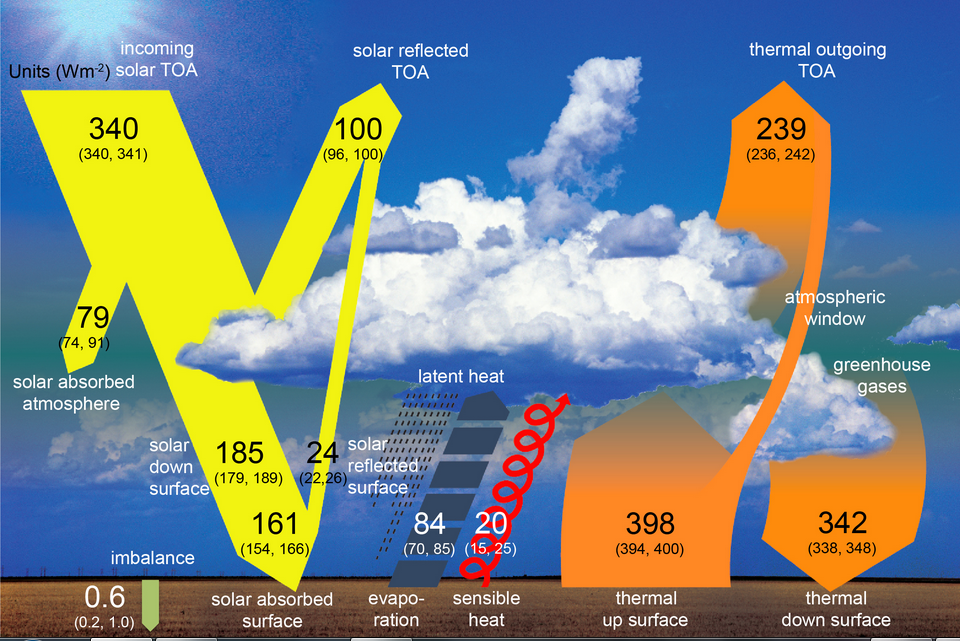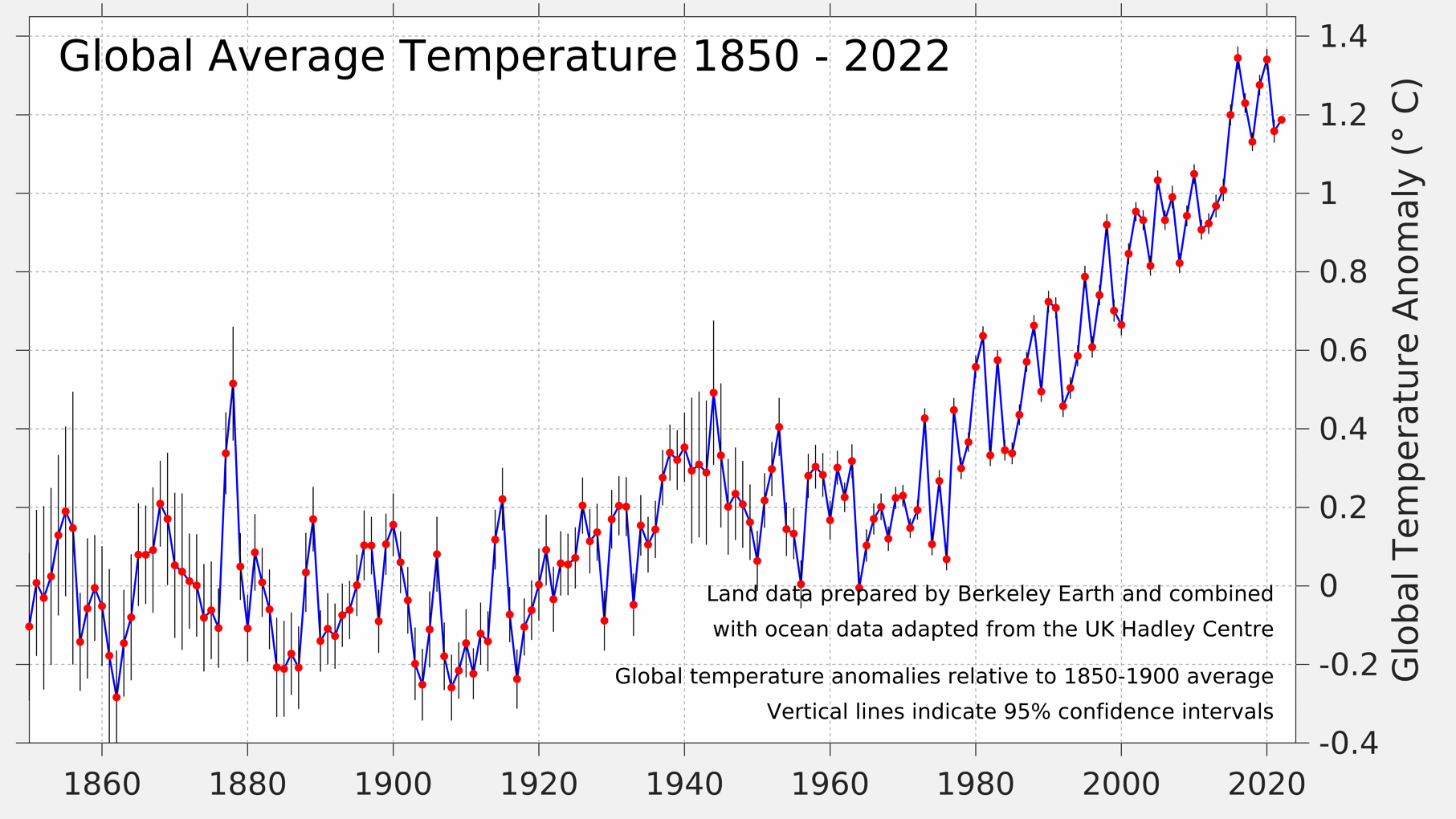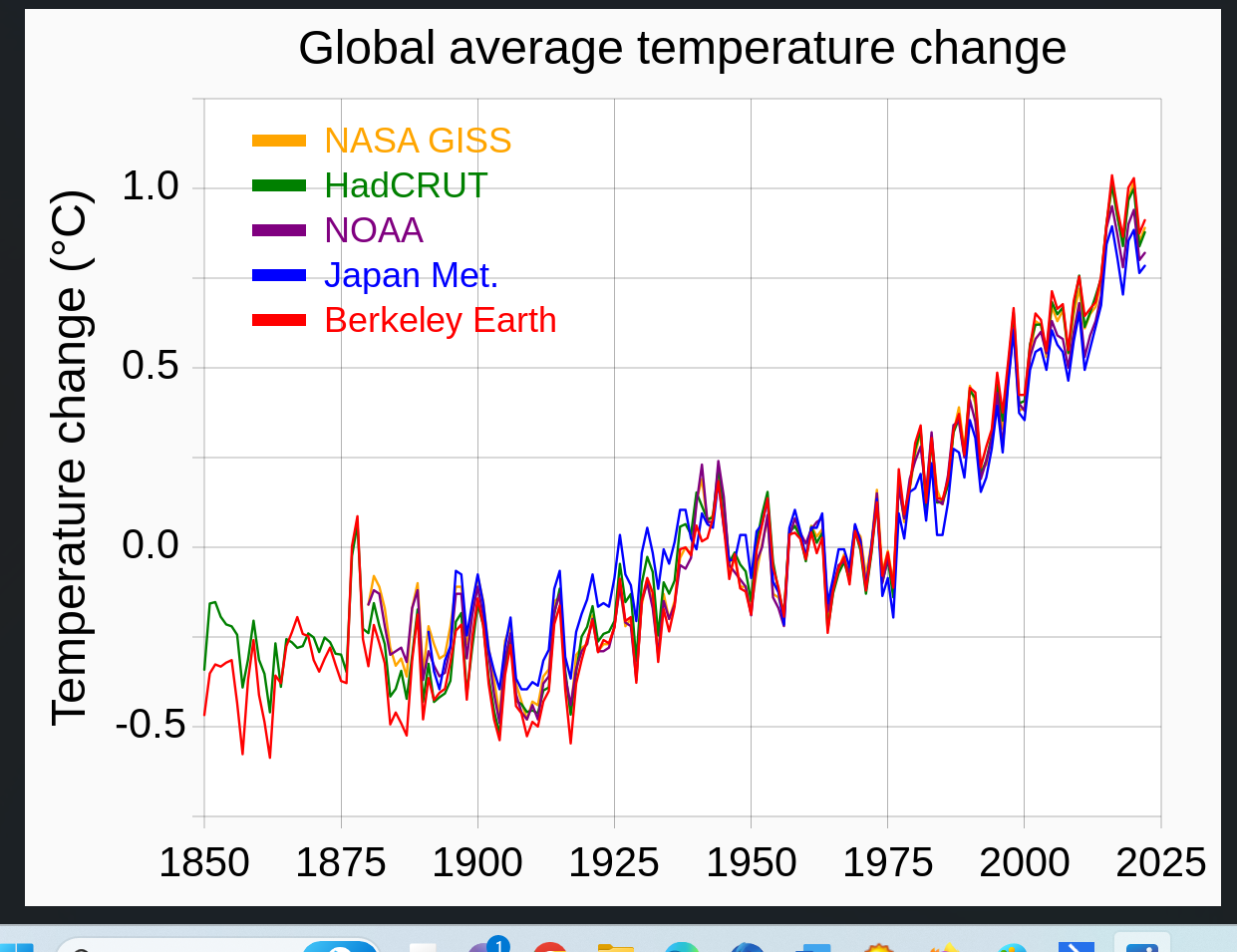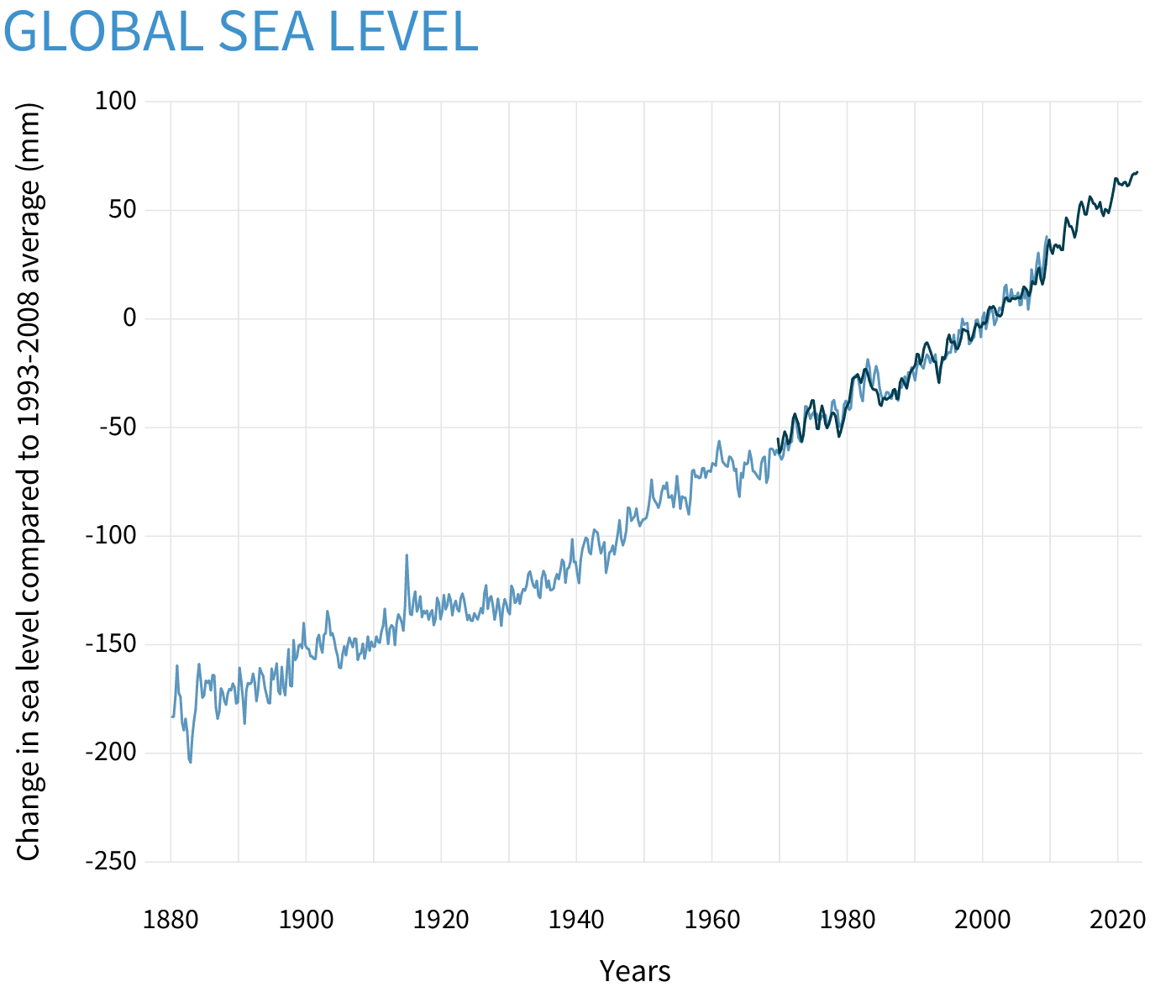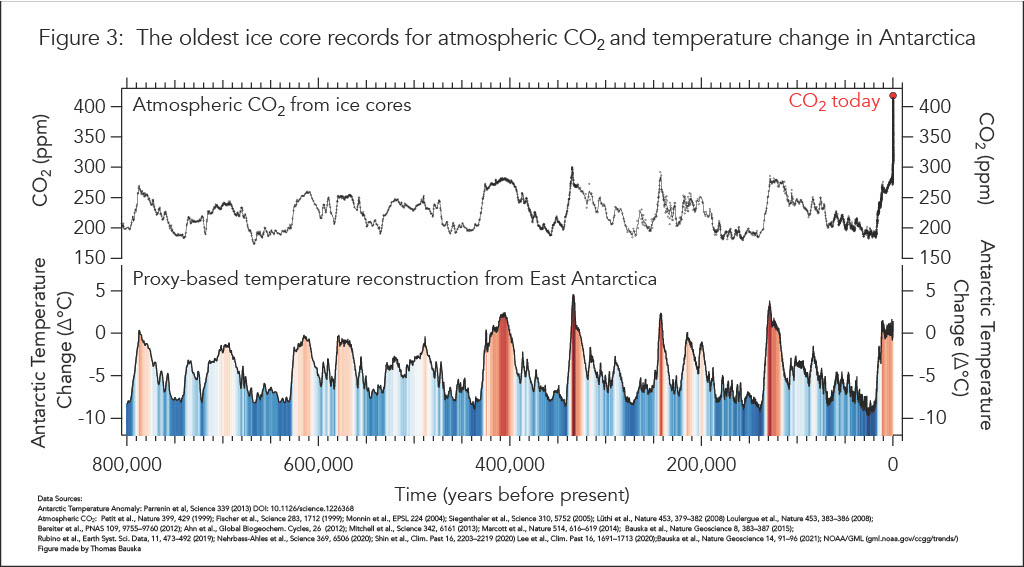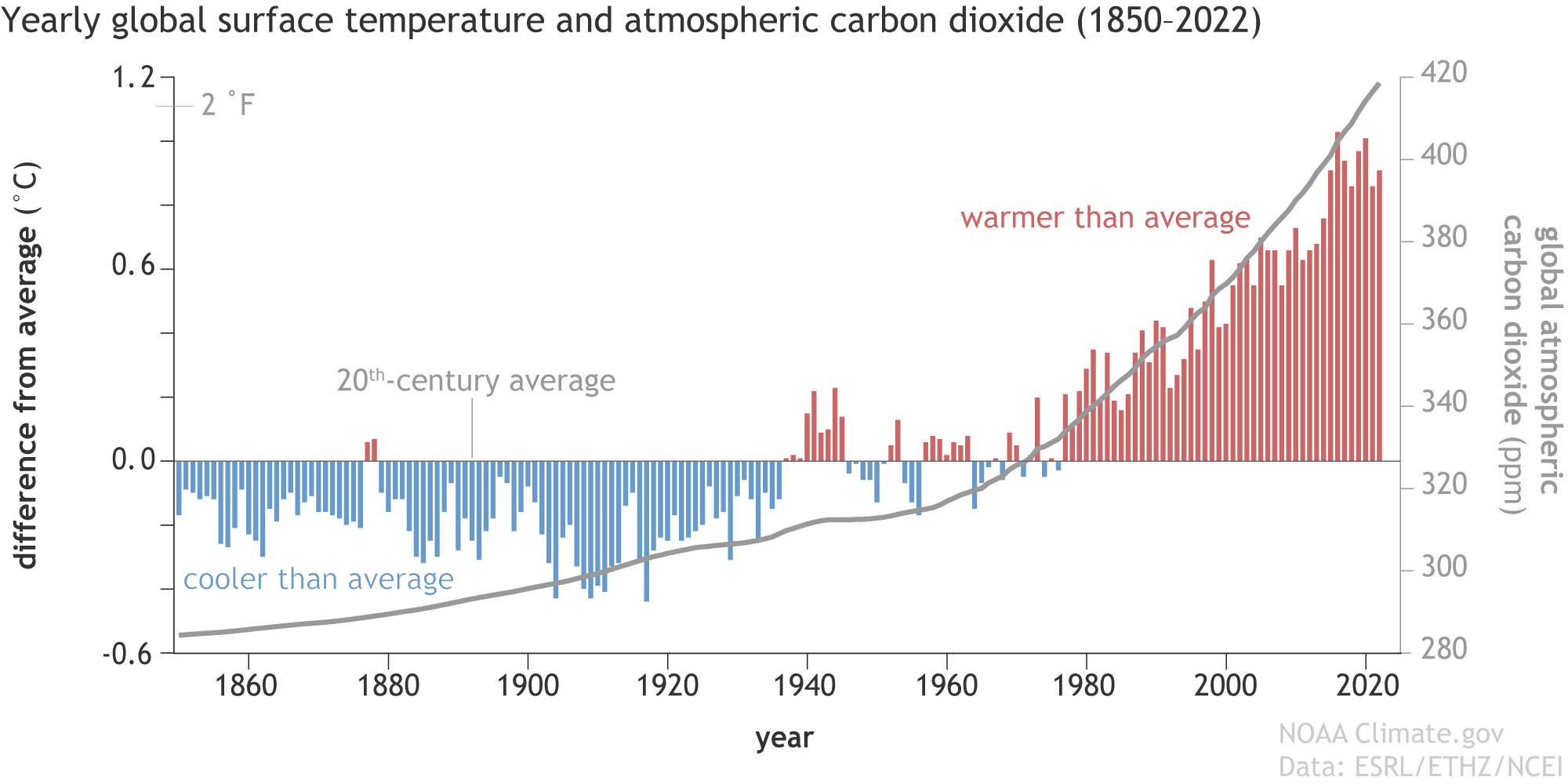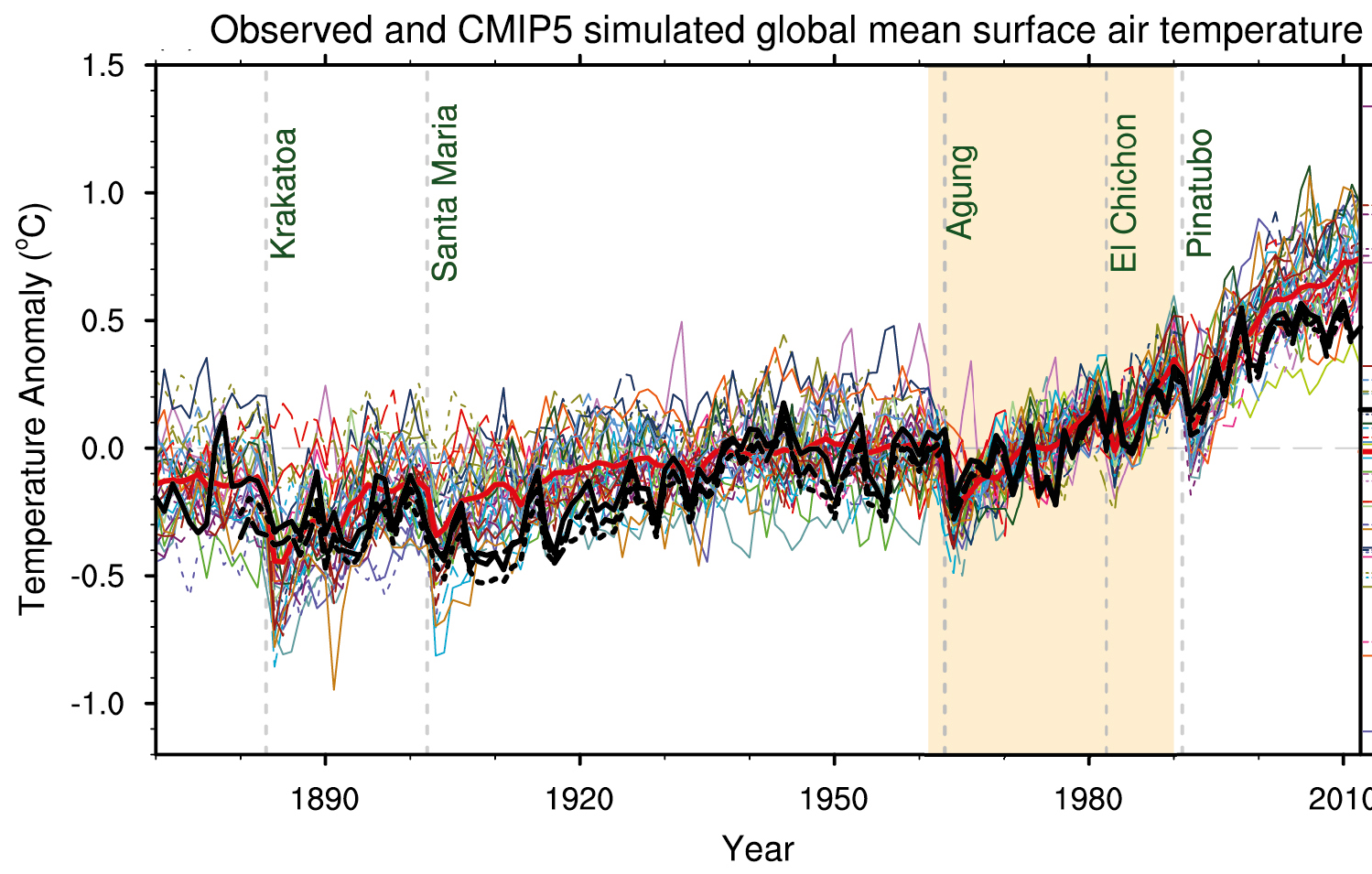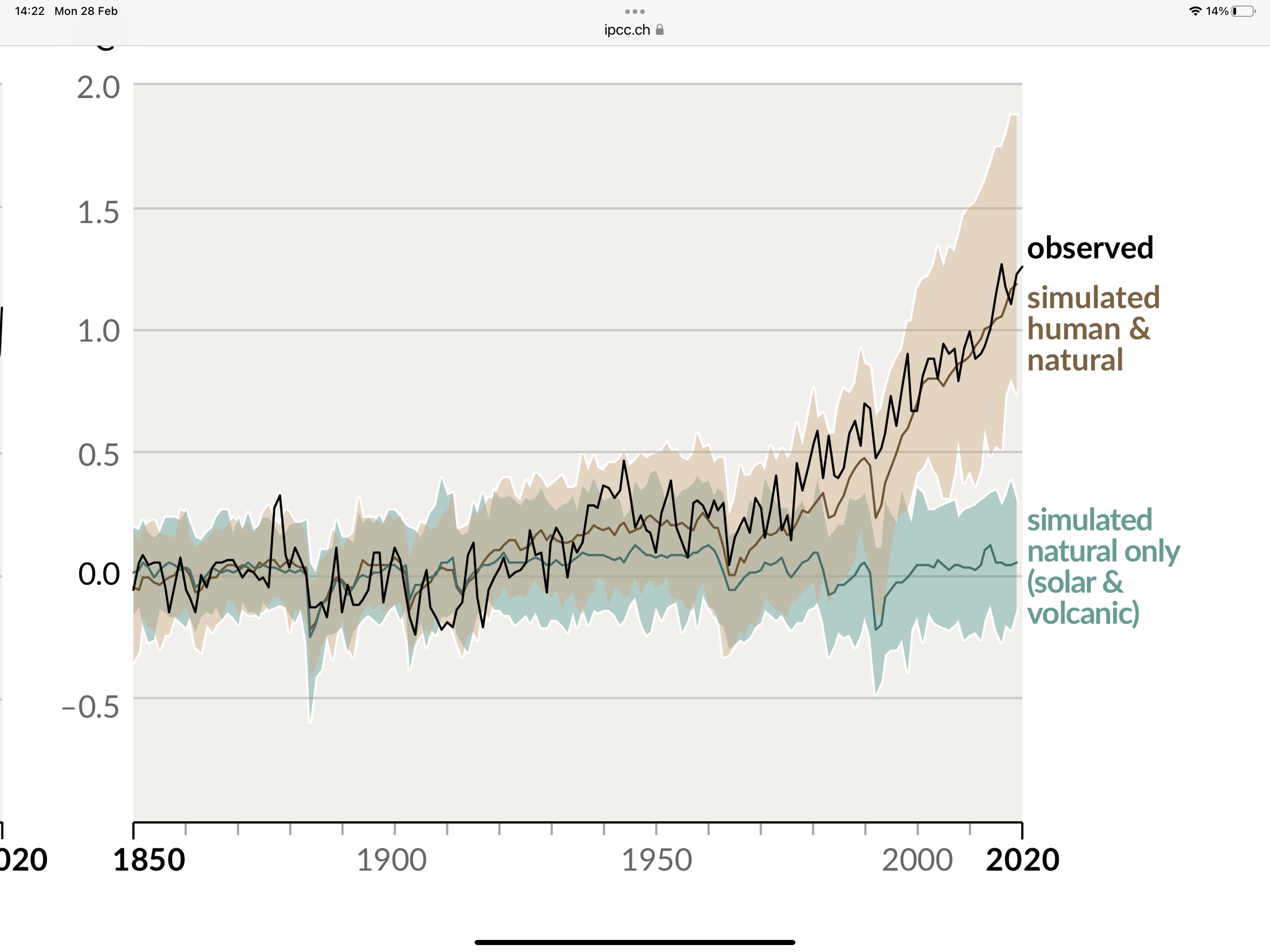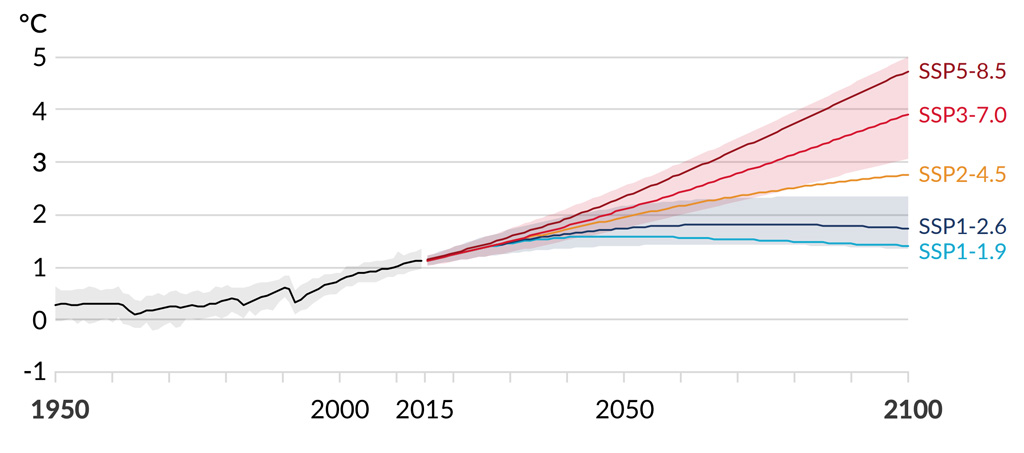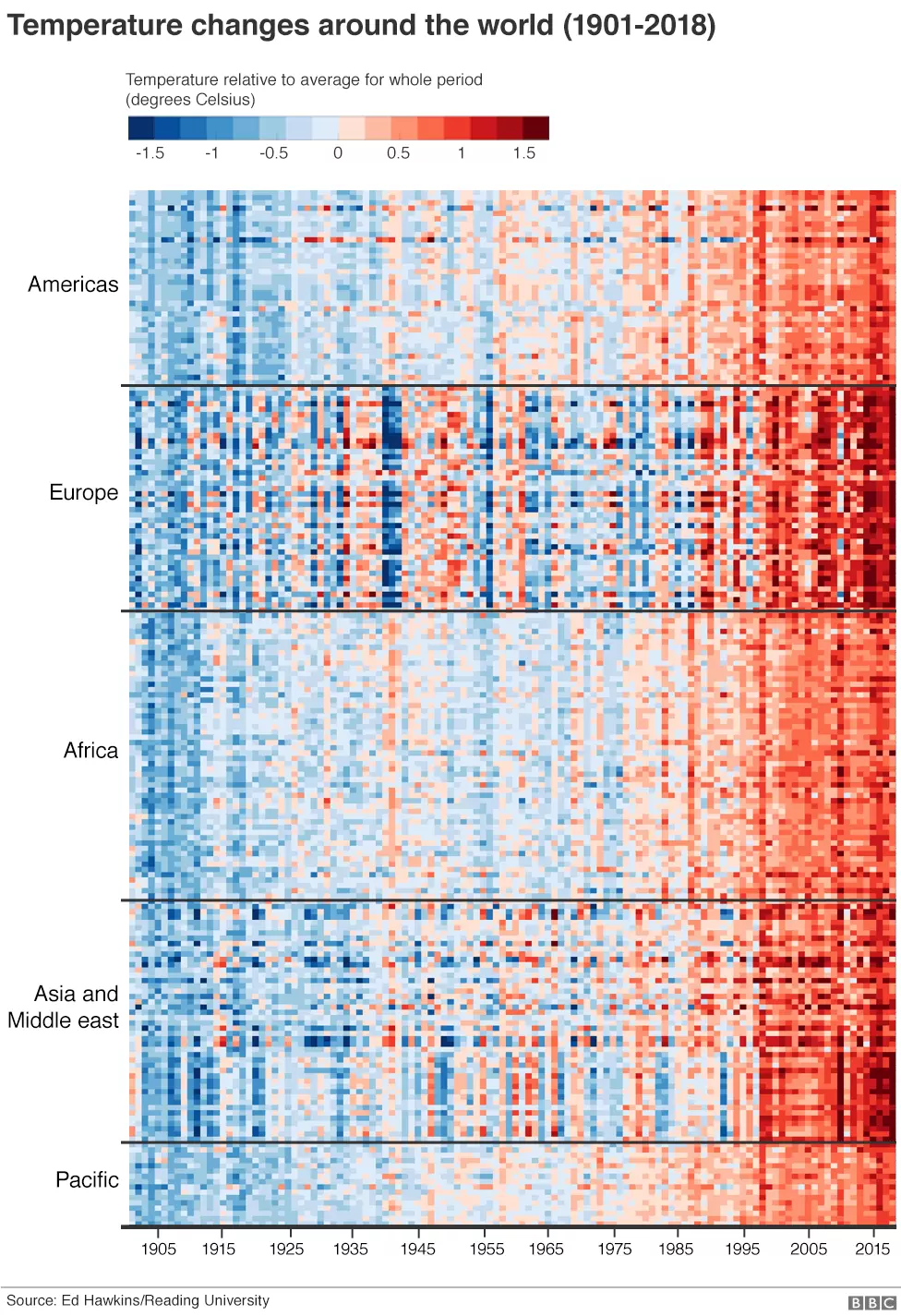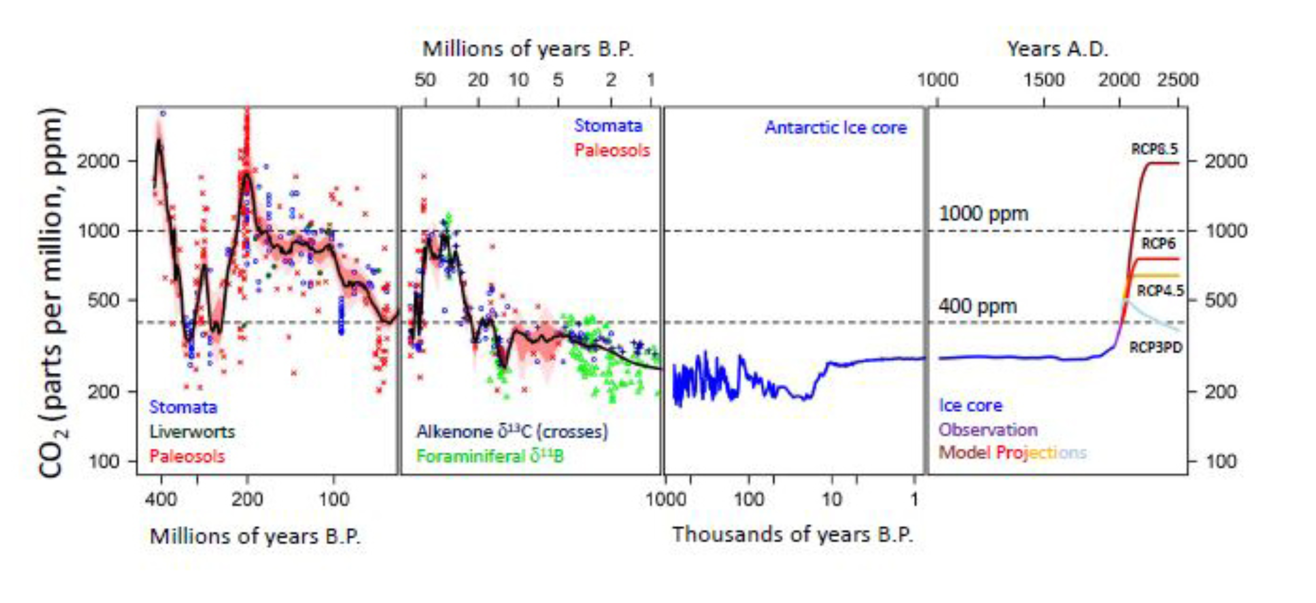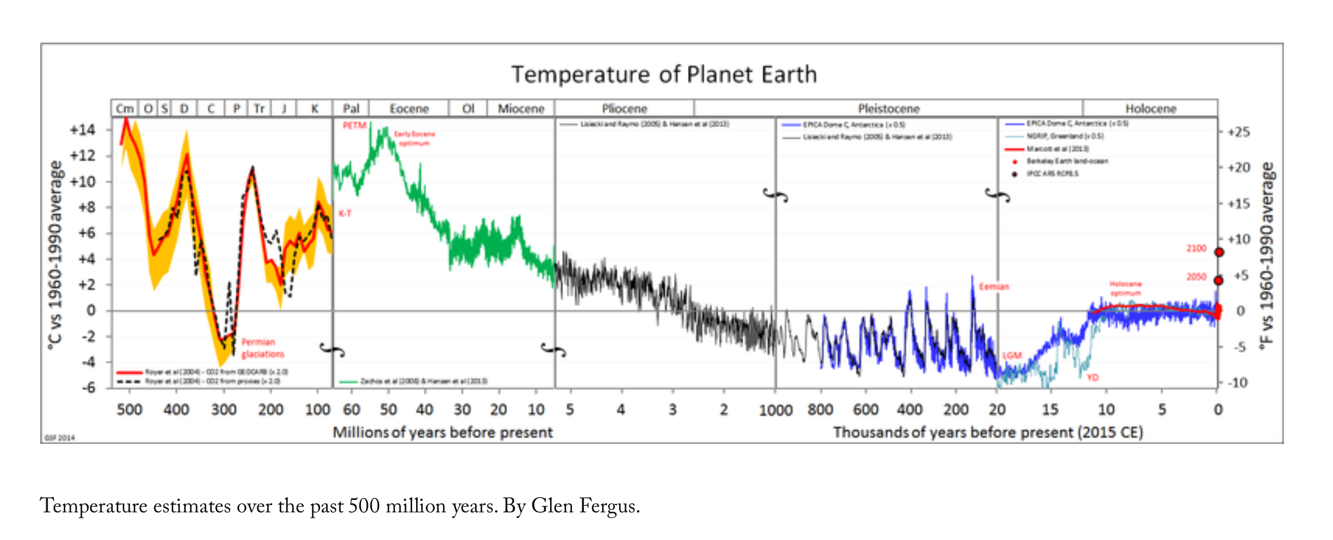Latest revision July 2023
About this page
Climate change is a subject that generates a great deal of heat often with little light. There is much emotion often conflated with politics. I see much confusion in the general perception if not within the climate science community. This page describes what is happening in general terms, why it is happening and how we know it is happening. Many scientific and statistical papers are referenced for those who wish to know the details. Many will put them in Huckleberry Finn’s description of Pilgrim’dsProgress when he found the “statements interesting but tough.”
Anyone interested in actions to be tsken might find courses run at Exeter University to be of interest.
Related pages
On this page
Introduction
Some history
The Questions
Why does climate change?
Is it really getting warmer?
Are greenhouse gases really the cause?
Satellite measurements
Is man responsible?
Models and what they show
Climate Scenarios
Appendices
Warm and cold periods
Ozone
Climate myths
Long period history
This is my latest revision of a page written, originally, in 2004. I have tried to make it more succinct than the original although that is difficult with such a complex, wide-ranging topic. I hope that short, clearly headed sections will help the reader.
There has long been much misinformation on this topic. In the past, the industry has been misleading at best, dishonest in effect. There has bee much phony research not dissimilar to the tobacco controversy some years ago. Some journalists and authors have been misguided and, sometimes dishonest. The general public finds it difficult to distinguish between genuine scientists and these other sources. Social media are often preferred to genuinely unbiased, factual reporting.
Introduction
Climate is changing. Given the potential dangers and the perceived costs of taking or not taking action, it is not surprising that there are widely disparate views among the general, non-specialist public and some politicians. At one extreme we have the doom-mongers who predict the end of the world as we know it. At the other extreme are the deniers who seem to be incapable of accepting the reality of climate change let alone why it is changing. Then we have those that accept what has happened as fact but are reluctant to go further and agree that there may be real dangers. Sometimes known as “luke warmers”, in effect, they are closet deniers.
There are many reasons for natural climate change and these are sometimes used by deniers of climate change to muddy the waters. A fairly complete summary is at How Earth’s Climate Changes Naturally (and Why Things Are Different Now)
Talking to climate scientists and reading peer reviewed papers, it is clear that none of these positions is correct or sensible. I have a wide-ranging meteorological background but am not an expert in the subject. I have tried to write this page as a “plain man’s guide.”
Some history
It has been known since the mid 19th century that CO2 can absorb infrared radiation but it was not until the 1970s that satellites started to measure the absorption globally and continuously. It was also in the 1970s that radiative transfer was incorporated into Numerical Weather Prediction (NWP) models.
One of the criticisms of climate scientists relates to the suggestion of a “nuclear winter.” The idea being that increasing dust from industry and domestic fossil fuel burning would cool the atmosphere. The first Gulf war with destruction of oil wells creating vast dust clouds heightened that idea. The possibility is still real despite significant reductions in anthropogenic aerosol production. One of the known unknowns is the extent of future volcanic eruptions. We know, from temperature observations after major eruptions back to Krakatoa in 1883, that volcanic dust has a measurable cooling effect lasting several years. Although highly unlikely, a period of intense eruptions could still give us a “nuclear winter” effect. A study of Second World War nuclear bombing has suggested that if 1% of the existing nuclear weapons were deployed at roughly the same time, then we could have a “nuclear winter.”
The Questions
Is climate changing? The answer must always be "Yes". Climate has always been changing. But, the important questions are:
- Are the current changes really unusual?"
- Why is it changing?
- Is man responsible?"
- And, if so can or should any action be taken?
Why climate changes
On my NWP page I describe briefly how the atmosphere works. As will be seen from that page and this diagram it is a complex system driven by heat from the sun as the only external source of energy to the climate system.
Two factors determine the heat input to the atmosphere. The first is how heat from the sun is geographically distributed relative to the major land masses. The second is how that heat is converted into air movement that we experience as the weather and climate system.
Geographical distribution of heat from the sun
Over periods of many thousands of years, changes in the earth’s orbit around the sun have led to Ice ages and Inter-Glacial Periods. Three factors come into play.
- The elliptical path of the earth around the sun is slowly changing.
- The tilt of the earth’s axis to the plane of the orbit is changing.
- “Wobbles” in the tilt of the axis.
The fastest of these, and with the smallest effect, is the “wobble” with a period of around 45,000 years. The other two have periods of around 150,000 and 100,000 years respectively.
The Northern Hemisphere's last ice age ended about 20,000 years ago, and it has been generally assumed that the ice age in the Southern Hemisphere ended about 2,000 years later although recent evidence suggests that that Antarctic warming may have begun 4000 years earlier than previously thought.
In the context of what has happened over the past 100 or even 1000 years, these orbital variations are too slow to have a measurable effect.
Over long periods the emission of heat by the sun is virtually constant. There are cyclic changes in the amount of heat emitted by the sun – the quasi 11-year sunspot cycle is the best known. The effects of this are fairly small and usually swamped by other effects. In any case, being cyclic, they do not create long term change.
How heat drives the atmosphere
The atmosphere is transparent to short wave radiation – mainly at wave lengths of visible light and UV resulting from the sun being around 6000 degC. The earth absorbs that heat and, much cooler at about 15 degC on average, radiates in the infrared. Some of the outgoing infrared radiation escapes out to space and has little effect. The rest is is absorbed and re-emitted by cloud, aerosols andgreenhouse gases. Primarily, these are water vapour (H2O), carbon dioxide (CO2), methane (CH4), various industrial gases such as nitrous oxide (N2O), halocarbons (CFCs) and ozone (O3). The aerosols come naturally from volcanoes, from dry land and outer space. Man inputs aerosols from industry and other activities such as agriculture and deforestation. Overall, aerosols have a net cooling effect. Cloud is more complex and effects depend on the type of cloud, its height and thickness.
There are many feedbacks; examples are -
- Warmer air can hold more water vapour, a powerful greenhouse gas, so increasing absorption of IR.
- Warmer air melts polar ice resulting in less heat being reflected back out to space during the north or south polar summer.
- Less polar ice means that darker water will lead to more absorption of incoming solar radiation.
- Warmer air can hold more water vapour leading to more cloud increasing reflection back out to space of incoming solar radiation.
- Drier weather can cause desertification leading to more reflection of incoming short wave radiation.
- Wetter weather leads to more vegetation and less reflection. Both processes affect the carbon cycle.
- Etc etc
All the processes can, in principle be calculated using the same computer models that predict daily weather. These are not used to predict specific weather even on yearly scales. They are used to generate a model climatology.
To understand the carbon cycle, see the BBC or the Vision Learning pages.
Is it really getting warmer?
Instrumental data are, effectively only available since about 1850. But, since then instruments and observing practices have had to be standardised internationally. Observing networks have developed in various ways to meet differing civil and military needs. Land use, deforestation and urbanization have changed. There are few reliable long term records and many records of varying lengths and reliability. There have been many local changes at observing sites. These factors make assessment of data series extremely difficult, imprecise and open to criticism by deniers of climate change. Major weather services have developed climatological data sets in slightly different ways. Independently a university group at the University of California at Berkley has developed the Berkley Earth data series. Quite correctly, they started by being sceptical of the “official” dat analyses. They took a fresh approach which included looking at the data in slightly different ways using short term series of data that might have been ignored otherwise. This shows their best estimates of changes in global average temperature since 1850. The vertical lines show the uncertainty in the data.
However, as shown here, results were remarkably
similar to the “official” data sets produced by
- NOAA, US National Center for Environmental Information,
- NASA, Goddard Institute for Space Studies,
- The joint UK Met Office Hadley Centre and University of East Anglia, Climate Research Unit
and
- The Japanese Meteorological Agency
This gives confidence in the overall trends.
Source: Wikipedia Commons’
The most up-to-date data can be found at the Japanese Meteorological Agency site. They show global average temperatures on yearly, seasonal and monthly time scales.
The great variability in the graph of average global temperature is a consequence of the complexity of the global climate system. Phenomena such as El Nino, La Nina are internal to the climate system driven by heating from the sun. They cannot drive long term climate change although they are important over periods of a few years, This next diagram puts the warming over the past 150years into the context of the last 2000 years. This shows how unusual is the recent trend.
Source: NASA Earth
Some 90% of the heat in the system is contained in the oceans compared to about 3% in the atmosphere. The remaining heat is contained in the land and the polar regions. The marked and obvious variations in air temperature are, in fact, rather trivial noise in a global context. A better measure of heat in the climate system is shown in tidal gauge data dating back to the late 19th century. Ocean levels increase because of thermal expansion and melting of land ice mainly over Greenland and the Antarctic continent.
Sea levels are now rising faster than at any time during the past few 1000 years. See the Smithsonian National Museum of Natural History website. See, also the Royal Society page on Sea levels.
Are increases in greenhouse gases really the cause?
We know that the earth’s climate goes through ice ages and inter[glacial periods due to slow changes in the orbit of the earth around the sun. In the depths of an ice age, the cold air can hold little water vapour and that life, animal and vegetable is at a minimum. As the orbit starts to result in a warming, there are several effects:
- The air is warmed by conduction and convection. Heat radiated by the earth mostly passes straight out to space.
- Water starts to evaporate leading to increasing water vapour, a greenhouse gas that can absorb heat thus enhancing the warming.
- The warming leads to increases in animal and vegetable life leading to a slow in crease in both CO2 and CH4,. Both are greenhouse gases that are more powerful absorbers, molecule for molecule, than water vapour.
- The extra warming results in more evaporation, leading to more heating.
- In turn, this leads to more CO2 and CH4, so creating a feedback.
In the first 800 to 1000 years after starting to come out of an ice age, water vapour is the main driver for a warming climate but then the feedback effects come into play. CO2 becomes increasingly important becoming the main driver with water providing the feedback. In the “natural” world, i.e. before the industrial revolution this cycle gave a sequence of temperature and CO2 as shown below. CO2 Concentrations never exceeded 300 ppm, implying a natural limit to global temperatures.
This shows how CO2 concentrations and temperatures have varied through several ice ages and inter-glacial periods. The proxy data for temperature equates to about a 10 degC range. This BAS study shows that the fastest rate of increase in CO2 concentration had been 20 ppm over a 1000 year period and the maximum CO2 concentration never exceeded 300 ppm. In recent years, we have seen a rise of 20 ppm in 10 years and concentrations up to about 420 ppm!
In more detail this shows how global temperatures and CO2 have varied since the start of the industrial revolution. The correlation is quite clear.
Satellite measurements of absorbtion of greenhouse gases
Low earth orbiting satellites carry radiometers (spectrophotometers) that measure infrared radiation from the earth, at specific wavelengths. The ir spectrum is from about 1 micron to 1000 microns (1 micron = a millionth of a metre), a broad spectrum. The atmosphere is transparent to ir at some wavelengths. These are used to provide images of cloud and earth in the infrared. The intensity of the received signal is a direct measure of the surface temperature. Water vapour absorbs infrared radiation mainly in two spectral bands. The received radiation in these bands is measured. The reduction in intensity of the received radiation is a direct measure of the heat absorbed due to water vapour. By measuring radiation received at other wavelengths, the absorption due to CO2 and CH4 and other gases is measured
In round terms, for every 100 Watts of infrared radiation from the earth absorbed by water vapour, 40 watts are absorbed by CO2. That is despite there being around 70 times as much Water vapour as CO2.
For further information, see the MIT Satellite Portal.
These measurements provide quantified, unequivocal evidence that the increases in greenhouse gases since the industrial revolution are directly affecting how the atmosphere is heated. The increases equate, roughly to a one percent increase in solar emissions. There are still doubters and deniers who claim that the warming since the industrial revolution are natural effects. I know of no evidence to support such claims and invite them to explain the facts set out in this and other sections of this page.
Are increases in CO2 due to man?
First, there is circumstantial evidence comparing the amount of CO2 in the atmosphere with the amount of fossil fuels used since the start of the industrial revolution. This involves estimating how much CO2 has been absorbed by the oceans a land surfaces. Particularly vegetation.
More direct evidence comes from isotope analysis of CO2 in the atmosphere. This shows conclusively that man is largely the cause of increased greenhouse gases. See Stable and Radiocarbon Isotopes of Carbon Dioxide.
Model predictions
Climate models are, basically, the same models used nowadays to predict day-to-day weather although there are differences in the mode of operation. They do not attempt to predict weather for a specific period but are used to develop a model climatology. By varying inputs such as greenhouse gas concentrations, volcanic activity, solar activity (sunspots), changing land use etc, climate outcomes can be calculated for different scenarios.
Climate models are far from perfect for several reasons. Because different organisations run models in slightly different ways determined, to some extent, by available computer power it is useful to compare results from a large number of models. The models can be run with various scenarios and the sensitivity of the climate to different factors estimated. The amounts of carbon dioxide, methane, nitrous oxide, nitrogen dioxide, CFCs, ozone and other gases can be varied and the different responses calculated and compared with observation.
This shows model simulations of climate for the period from the late 19th century to 2016. The average is shown in the red line and the actual, observed climate in the thick black line. The responsE of the models to volcanic eruptions is clear.
This is taken from the IPCC Panel 1 Assessment Report 6, WG1, Summary for Policy Makers. This shows computer simulations of global surface temperature over the period 1850-2020. The red line is the average. Actual values shown by the black line show that the models are well able to replicate reality. The lowest, grey, line and shows results when the models are run using only natural forcing factors, primarily solar input and volcanic activity. The shaded areas indicate the spread of the computations.
The two simulations were fairly close until after 1950. Thereafter the differences become increasingly clear. This shows that the model represented well, the effects of mankind on the climate. This give confidence in the ability of models to predict future events, assuming, of course, that the scenarios are realistic.
Climate scenarios
What will happen to climate in the future clearly depends on what we do in using fossil fuels and how quickly we move to renewable energy sources. Based on assumptions provided by governments and their he scientists can run their models to provide best guesses of the outcomes. The Carbon Neutral Group has summarised the 5 scenarios used in the Sixth IPCC Assessment Report. Globally the five assessments look like this
These scenarios can be refined to show regional variability. Naturally, there is scope to improve models but this will require further research to model better the effects of feedbacks, especially cloud. There is also scope for improvement in the input data from economists and planners.
Operational weather forecast models are run as ensembles. The initial conditions are varied slightly to account for uncertainties in the data analysis. A similar technique can be used with climate models, see Quantification of modelling uncertainties in a large ensemble of climate change simulation and Climate Ensembles. This studied the different effects of variations in the initial conditions, different representations in models of physical processes as well as factors affecting absorption of heat by gases, aerosols and clouds. Ensembles help to quantify uncertainty in climate predictions.
Appendix 1
Warm and cold periods in our recorded history.
There have been several examples of warm and cold spell over the past 2000 years although with some uncertainty about whether these are global or regional. The Mediaeval Warm Period lasting from around 950 to 1250 CE, the Romao-British period and the Dark Ages cold periods may have been regional rather than global phenomena. The Little Ice Age, roughly 1300 to 1850 CE, was longer lasting and more complex than the others. There were periods of excessive volcanic eruptions and low solar activity. One such is known as the Maunder Minimum, 1645 to 1715 CE, when sunspots were exceedingly rare.
A recent UCL study has suggested that human effects might have been contributory factors. Prior to the arrival of Columbus in the New World there had been around 60 million people in South America with about 600 million worldwide. About 100 years later there were only about 6 million in S America, largely because of diseases and massacres. Vast areas of cultivated land were rapidly returned to forests. Sequestration of CO2 occurred.
Calculations show that consequent reduction in CO2 might have added to and enhanced the naturally occurring cooling. It sounds plausible but the jury is out on this one as far as I am concerned. It does show or suggest, at least, the importance of natural sinks for CO2.
Another paper, Consistent multidecadal variability in global temperature reconstructions and simulations over the Common Era, referred to earlier, suggests that these and other, similar events were not global but regional.
This current warming is clearly global as this diagram showon on the BBC websie. This was produced produced by Ed Hawkins of Reading University.
Each line of coloured pixels is the temperature record of an individual nation within its region. Within each region, countries are in alphabetical order. For Europe, Albania is at th top and the United Kingdom at the bottom. Blues are cooler years; the reds are warmer. The far left is 1900; the far right is the present day.
Appendix 2
Ozone
Ozone (O3) is a natural gas that is subject to human effects. O3 is formed in the stratosphere when ultraviolet radiation from one part of the solar spectrum causes disassociation of oxygen (O2) at low stratospheric pressures, to create O1. These free molecules combine with O2 to create O3. This gas blocks UV in another part of the spectrum and helps to protect us from skin cancer. CFCs, from aerosol cans for example, and other man-made gases reach the stratosphere and destroy some of the O3 resulting in a triple whammie.
- Cancer risk is increased.
- More UV reaches the troposphere giving more heating.
- CFCs are also greenhouse gases in the troposphere.
Appendix 3
Climate change myths
There are many of these put out by deniers and sceptics. Some are patently untrue; others are partial truths. An example is the statement that it is rising temperatures that causes increases in CO2. That is the case when coming out of an ice age when vegetation and animal life is at a minimum. When vegetation develops and animal life becomes established then CO2 release from the oceans becomes a secondary effect, more of a feedback. This is discussed at https://scripps.ucsd.edu/programs/keelingcurve/2014/06/20/how-do-co2-levels-relate-to-ice-ages-and-sea-level/. The killer is the isotope result described earlier.
Two genuinely scientific sources of FAQs are the IPCC AR6 FAQs and the Royal Society Climate Change A Quick Guide.
Appendix 4
Long term historical context’
Climate has to be seen in the context of changes due to the earth’s orbital variations but also within the much longer time frame associated with the total history of the planet. This first diagram show how CO2 concentrations have varied over the last 400 million years,
Homo erectus appeared around 1.5 million years ago. Homo sapiens evolved between around 200,000 to 300,000years ago. So, throughout most of the evolution of man, CO2 concentrations were well below 400 ppm and, in fact, mostly below 300 ppm.
Global temperatures over this same period are shown here:
From Foster et al, Nature, Communications, 2017 as shown by Earth.org In effect, we have accidentally geo-engineered a climate unlike anything that has occurred since the earliest days of human evolution. This diagram also shows future global temperatures under various IPCC scenarios. A business as usual scenario looks disastrous. There seems no alternative but to geo-engineer deliberately to a liveable, far from perfect, climate.
A geological perspective is well described in an Ice Ages, BBC In our time Podcast. This makes clear the reality of man-made climate change and that geo-engineering will be necessary to maintain a habitable world.

